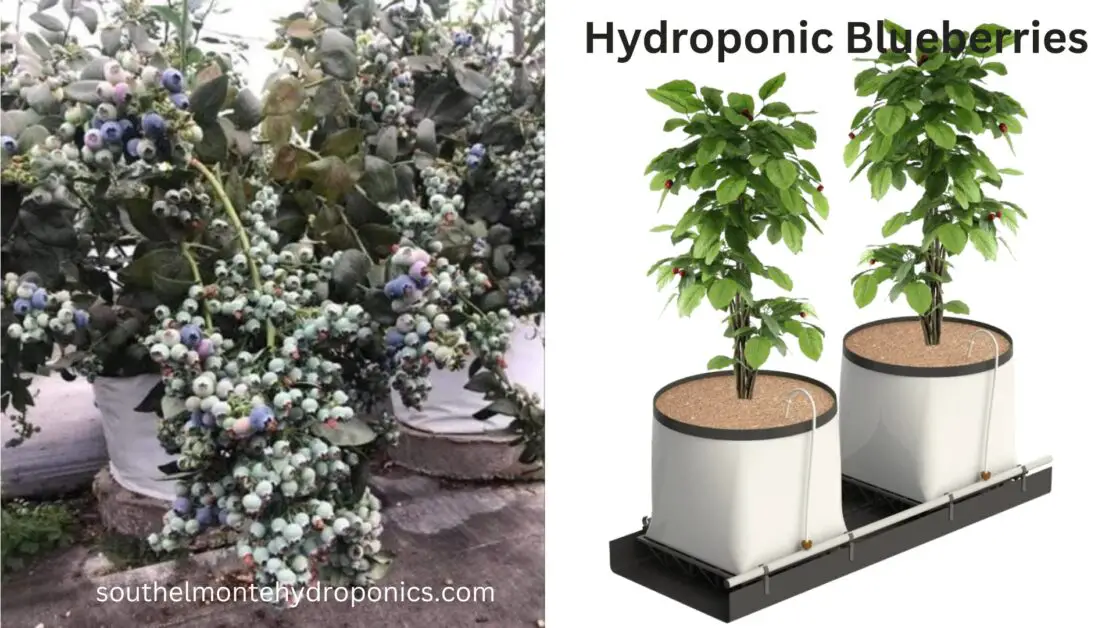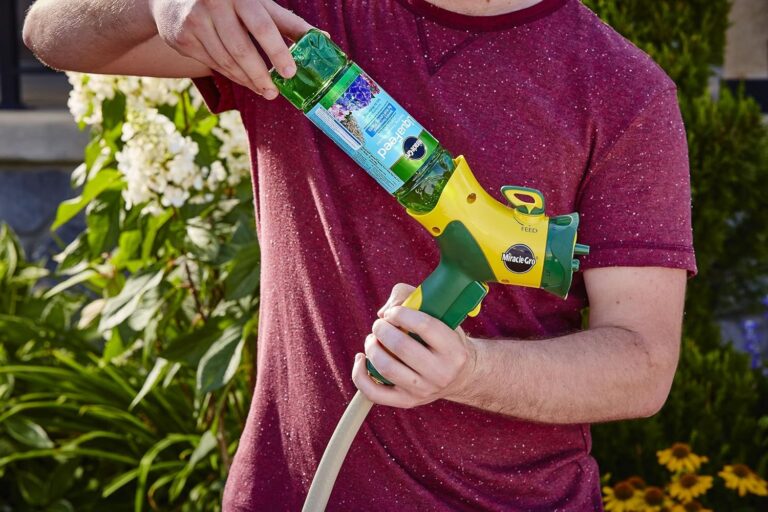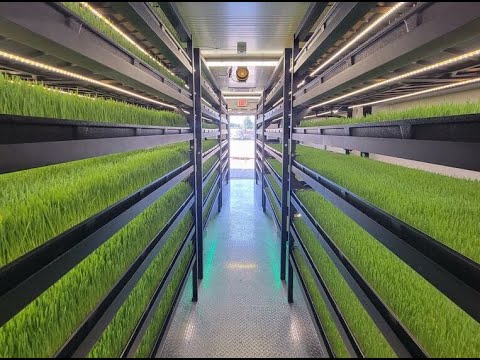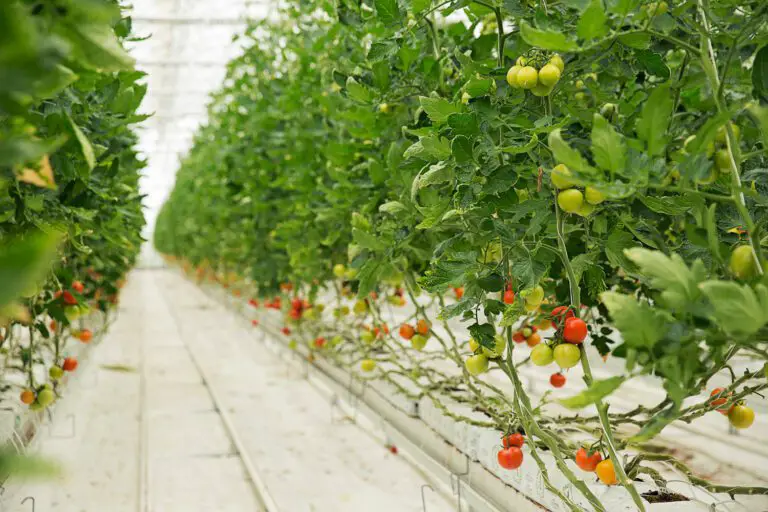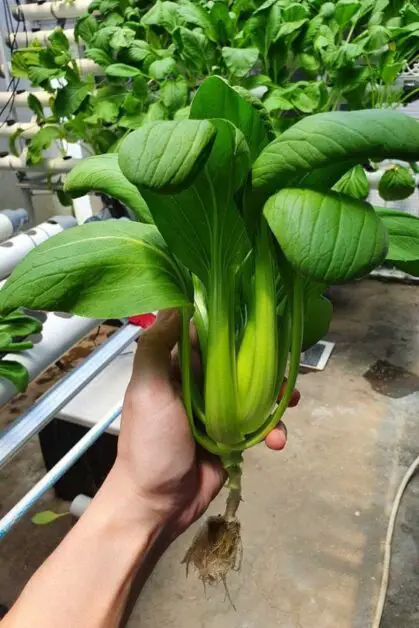Hydroponic Blueberries: How to Grow best Sweet and Tangy Blueberries in Hydroponics
Table of Contents: Hydroponic Blueberries
The Benefits of Growing in a Hydroponic Blueberries System
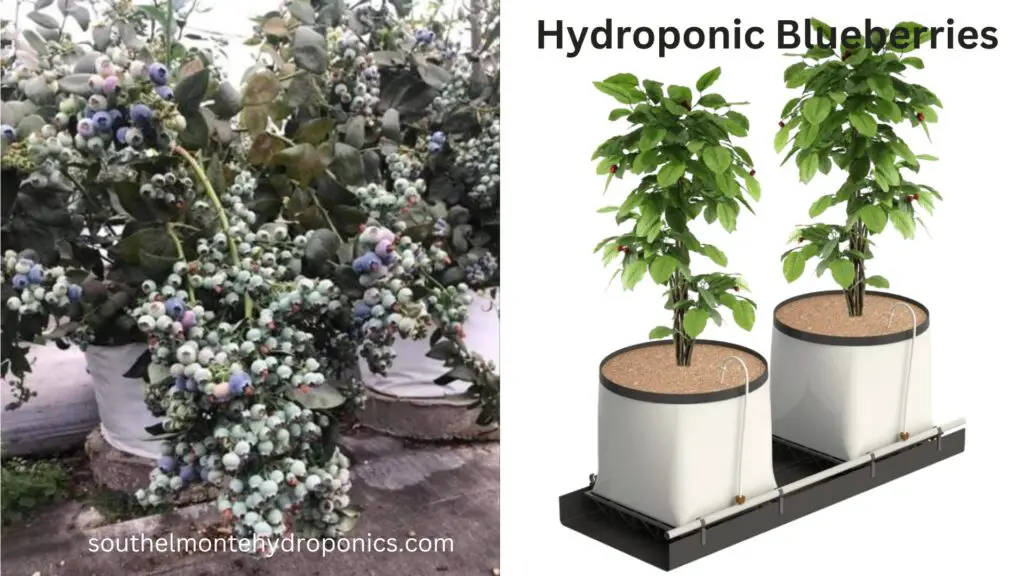
There are numerous benefits to growing blueberries in a hydroponic system. One of the main advantages is the ability to have year-round production regardless of the geographical location. Traditional soil-based cultivation is limited to specific climates, but with hydroponics, blueberries can be grown in controlled environments, ensuring consistent yields throughout the year. This not only provides a steady supply of fresh blueberries but also allows for the possibility of commercial production in non-traditional blueberry growing regions.
Additionally, hydroponic systems offer enhanced control over the growing conditions, resulting in improved plant health and productivity. By closely monitoring factors such as nutrient levels, pH, and lighting, growers can optimize the growth and development of blueberry plants. This precision allows for the customization of the nutrient solution, providing the exact balance of minerals and vitamins required for robust plant growth. Moreover, hydroponic systems minimize the risk of soil-borne diseases and pests, reducing the need for chemical interventions. With fewer external challenges, the blueberry plants can focus their energy on growth and fruit production, ultimately leading to higher yields.
Understanding the Basics of Hydroponic Blueberries Cultivation
Hydroponics is an innovative cultivation method that is gaining popularity among gardening enthusiasts, particularly for growing blueberries. By understanding the basics of hydroponics, you can unlock the immense potential of this technique for cultivating blueberries in a controlled environment.
In hydroponics, plants are grown without soil, relying on a nutrient-rich water solution instead. This method provides several advantages for blueberry cultivation. Firstly, it allows for precise control over nutrient levels, ensuring optimal growth and development. Secondly, hydroponics eliminates the risk of soil-borne diseases and pests, reducing the need for chemical interventions. Moreover, this technique optimizes the use of water, making it an environmentally friendly choice. With hydroponics, you can cultivate blueberries throughout the year, irrespective of seasonal limitations, providing a consistent supply of fresh and delicious fruits.
Selecting the Ideal Varieties for Hydroponic Blueberries Growth
When it comes to selecting the ideal blueberry varieties for hydroponic growth, there are several factors to consider. Blueberries come in different types, each with its own unique characteristics and requirements. One popular variety for hydroponic cultivation is the “Sharpblue” blueberry. This variety is known for its adaptability to different growing conditions and its ability to produce an abundant harvest. Another excellent choice is the “Sunshine Blue” blueberry, which is prized for its compact size and high fruit yield. If you prefer larger berries, the “Legacy” blueberry might be the right choice for you, as it produces deliciously sweet and juicy fruits.
Apart from the size of the berries, it’s important to consider the chill requirements of different blueberry varieties. Some varieties, such as “Chandler” and “Bluecrop,” require a certain number of chill hours in order to break dormancy and produce fruit. However, other varieties, like “Misty” and “O’Neal,” have lower chill requirements, making them more suitable for hydroponic systems in regions with milder winters. By selecting blueberry varieties that match the chill hours in your area, you can ensure optimal growth and fruit production in your hydroponic setup.
Creating the Perfect Growing Environment for Hydroponic Blueberries
Creating the perfect growing environment is crucial for hydroponic blueberries to thrive and produce bountiful yields. Blueberry plants have specific environmental requirements that need to be met in order to achieve optimal growth and fruit production.
First and foremost, it is important to provide the right amount of light for hydroponic blueberries. These plants require a minimum of 8-10 hours of direct sunlight or high-intensity artificial light each day to ensure proper photosynthesis. LED grow lights with a spectrum tailored to the needs of blueberry plants can be a great option for indoor hydroponic systems.
Maintaining the ideal temperature is also essential for hydroponic blueberries. They prefer a daytime temperature range of 70-80°F (21-27°C) and a nighttime temperature range of 55-65°F (13-18°C). Fluctuations in temperature should be minimized to avoid stress on the plants. Adequate ventilation and air circulation within the growing area can help regulate temperature and prevent the buildup of excess humidity, which can lead to fungal diseases.
Choosing the Right System for Hydroponic Blueberries Cultivation
When deciding on the right hydroponic system for blueberry cultivation, it’s important to consider the specific needs of these plants. Blueberries thrive in systems that provide ample root space, efficient nutrient delivery, and proper airflow. One popular option for blueberry cultivation is the nutrient film technique (NFT) system. In this system, a thin film of nutrient-rich water flows continuously over the plant roots, providing a constant supply of nutrients. NFT systems are ideal for blueberries as they promote healthy root development and allow for easy monitoring and adjustment of nutrient levels. Another option to consider is the deep water culture (DWC) system, where the plant roots are submerged in oxygenated nutrient solution. This method provides excellent aeration and nutrient uptake for blueberries, ensuring their proper growth and development. As with any hydroponic system, it’s important to ensure that the chosen system is compatible with blueberries and can meet their specific requirements.
In addition to NFT and DWC systems, there are other hydroponic systems that can be suitable for blueberry cultivation. Drip irrigation systems, for example, deliver nutrient solution to the plants through a series of drip emitters, allowing for precise control of water and nutrient delivery. Ebb and flow systems, which periodically flood and drain the growing medium, can also be used for blueberries. These systems provide a balance of water and oxygen to the roots, promoting optimal growth. Ultimately, the choice of hydroponic system will depend on factors such as available space, budget, and personal preference. It’s recommended to thoroughly research and consider the pros and cons of each system before making a decision. By selecting the right hydroponic system for blueberry cultivation, gardeners can create an ideal environment for these delicious and nutritious fruits to thrive.
Providing the Proper Nutrient Solution for Hydroponic Blueberries
When it comes to hydroponic blueberry cultivation, providing the proper nutrient solution is crucial for ensuring healthy plant growth and bountiful harvests. Blueberry plants have specific nutritional needs that must be met in order to thrive in a hydroponic system.
One key nutrient that blueberries require is nitrogen. Nitrogen is essential for promoting vigorous growth and enhancing the overall health of the plants. However, it is important to note that too much nitrogen can lead to an imbalance in nutrient uptake, resulting in decreased fruit production. Therefore, it is necessary to carefully monitor and adjust the nitrogen levels in the nutrient solution to maintain optimal plant health.
In addition to nitrogen, blueberries also require phosphorus and potassium for proper development. Phosphorus is responsible for promoting root development, flower formation, and fruit set, while potassium helps in overall plant growth, disease resistance, and fruit quality. These essential macronutrients should be included in the nutrient solution in appropriate quantities to meet the specific needs of blueberry plants.
Furthermore, blueberries have additional requirements for micronutrients such as calcium, magnesium, iron, and manganese. These micronutrients play key roles in various physiological processes, including photosynthesis, enzyme activation, and nutrient uptake. It is essential to ensure that the nutrient solution contains the right balance of these micronutrients to prevent deficiency symptoms and promote optimal plant health.
Obtaining precise nutrient concentrations in the hydroponic system is vital for blueberry growth. Regular testing of the nutrient solution using a pH and electrical conductivity (EC) meter can help determine if adjustments are needed. Monitoring the pH level is crucial as blueberries prefer slightly acidic conditions between 4.5 and 5.5 pH for optimal nutrient uptake and root development. Adjusting the pH level accordingly will enable the plants to absorb nutrients more efficiently.
Overall, providing the proper nutrient solution for hydroponic blueberries is a critical aspect of successful cultivation. By understanding and meeting the specific nutritional needs of blueberry plants, gardeners can ensure healthy growth, increased fruit production, and ultimately, a satisfying harvest.
Maintaining Optimal pH Levels for Hydroponic Blueberries Plants
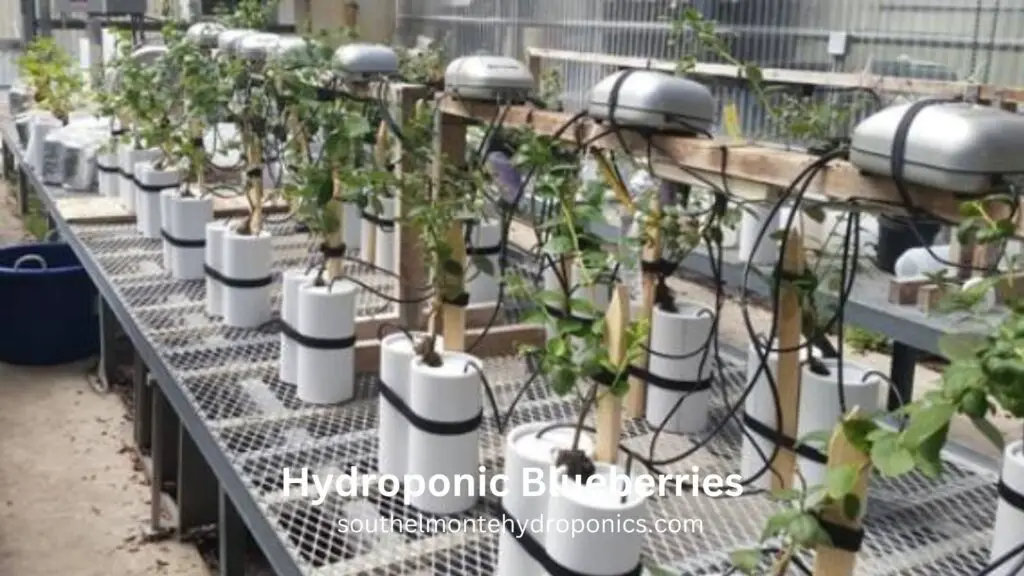
Maintaining optimal pH levels is crucial for the successful growth of blueberry plants in a hydroponic system. Blueberries thrive in an acidic pH range, typically between 4.5 and 5.5. This acidic environment supports the efficient absorption of essential nutrients by the plants’ roots, ensuring their overall health and productivity.
To maintain the ideal pH levels, it is essential to regularly monitor and adjust the nutrient solution in your hydroponic system. This can be achieved by using pH testing kits or meters to check the pH levels of the nutrient solution. If the pH deviates from the desired range, corrective measures must be taken promptly to bring it back to the optimal level.
When adjusting the pH, it is important to remember that different acidifying and alkalizing agents can be used. The choice of adjustment method will depend on your specific circumstances and the current pH level. For instance, if the pH is too high (alkaline), you can add small amounts of acidifying substances such as citric acid or phosphoric acid. On the other hand, if the pH is too low (acidic), you can use alkalizing agents like potassium hydroxide or calcium carbonate. Regular monitoring and adjustment of pH levels will help maintain ideal conditions for blueberry plants to thrive in a hydroponic environment.
Managing Lighting and Temperature Requirements for Hydroponic Blueberries
Lighting and temperature are crucial factors to consider when managing blueberry plants in a Hydroponic Blueberries system. Properly providing the ideal lighting conditions and maintaining the appropriate temperature levels can significantly impact the growth and productivity of hydroponically grown blueberries.
For optimum growth, blueberry plants require specific light conditions. Providing them with sufficient light is essential as it is vital for photosynthesis, the process by which plants convert light energy into chemical energy. Blueberries require a minimum of 12-16 hours of light per day to thrive. High-quality LED grow lights that emit a full spectrum of light are commonly used in hydroponic systems, as they can closely mimic sunlight and provide the necessary light intensity for blueberry plants.
In addition to lighting, maintaining the right temperature is essential for the successful cultivation of blueberries in a hydroponic system. Blueberry plants prefer cooler temperatures within the range of 60-75°F (15-24°C) during the day and slightly lower temperatures of around 55-65°F (13-18°C) at night. Consistency is key, as fluctuations in temperature can stress the plants and hinder their growth. Using temperature control systems, such as fans, ventilation systems, and temperature sensors, can help maintain the ideal temperature range for blueberry plants, ensuring optimal growth and fruiting.
By carefully monitoring and managing the lighting and temperature requirements of blueberry plants in a hydroponic system, gardeners can create an environment that promotes their healthy growth and maximizes their productivity. The next section will delve deeper into pruning and training techniques that can further enhance the performance of hydroponically grown blueberry plants.
Pruning and Training Techniques for Hydroponic Blueberries Plants
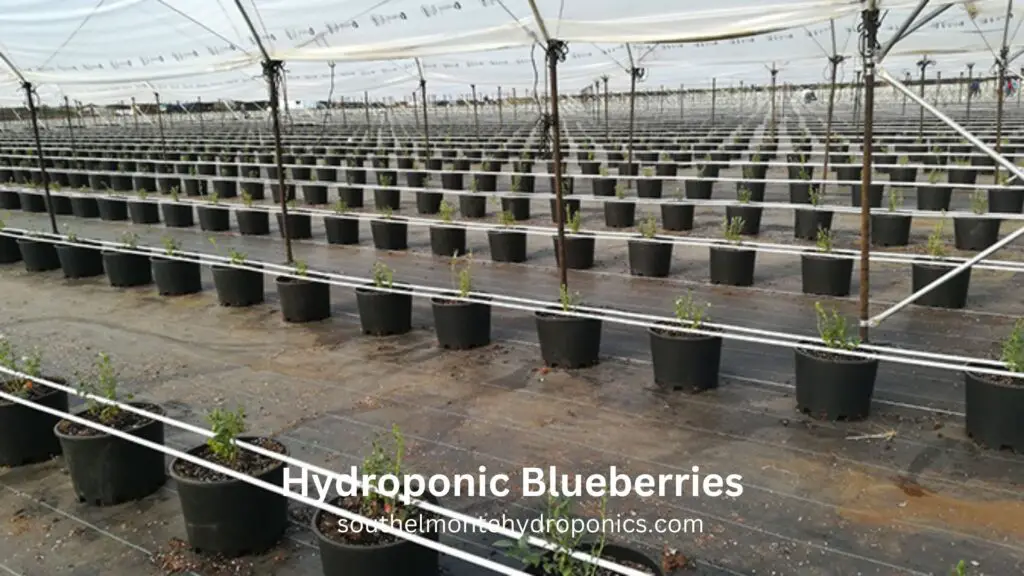
When it comes to pruning and training blueberry plants in a hydroponic system, there are a few key techniques to keep in mind. First, it’s important to regularly prune the plants to maintain their shape and promote optimal growth. This can involve removing any dead or diseased branches, as well as thinning out the foliage to increase airflow and minimize the risk of fungal diseases. Additionally, selectively pruning the plants can help to stimulate new growth and increase fruit production.
In terms of training, blueberry plants can benefit from supports such as trellises or cages. These structures help to keep the plants upright and prevent the branches from drooping and breaking under the weight of the fruit. By training the branches to grow along the supports, it’s also easier to access and harvest the berries. It’s important to regularly monitor the growth of the branches and adjust the supports accordingly to ensure they are properly supported throughout the growing season. By implementing these pruning and training techniques, hydroponic blueberry growers can optimize their plant’s growth and maximize their fruit yield.
Preventing and Managing Common Pests and Diseases in Hydroponic Blueberries
Common pests and diseases can pose a significant threat to the health and productivity of hydroponic blueberries. It is essential for growers to implement preventative measures and effective management strategies to safeguard their crops. One common pest that affects blueberries is the spider mite (Tetranychus urticae). These tiny creatures thrive in warm and dry conditions, causing yellowing and speckling of leaves and ultimately hindering the plant’s ability to photosynthesize. To prevent spider mite infestations, maintaining proper humidity levels and regularly inspecting plants for early signs of infestation is crucial. Introducing predatory mites like Neoseiulus californicus can also help control spider mite populations, as they feed exclusively on spider mites.
Another prevalent challenge in hydroponic blueberry cultivation is the occurrence of root rot caused by various fungi, including Phytophthora and Pythium. These pathogens thrive in excessively wet conditions, leading to root decay and reduced nutrient uptake for the plants. To prevent root rot, it is essential to ensure proper drainage in the hydroponic system and maintain appropriate oxygen levels for the roots. Regular monitoring of the nutrient solution’s pH and temperature is also vital, as root rot is more likely to occur in environments with high pH and warm temperatures. Growers can also utilize beneficial bacteria and fungi, such as Bacillus subtilis and Trichoderma, to suppress pathogenic fungi and promote a healthier root environment.
By implementing proactive measures and closely monitoring the health of hydroponic blueberries, growers can effectively prevent and manage pests and diseases. These strategies help ensure the plants thrive and produce an abundant harvest, allowing gardening enthusiasts to enjoy the fruits of their labor.
Ensuring Adequate Pollination for Hydroponic Blueberries
Ensuring adequate pollination is crucial for hydroponic blueberry cultivation to achieve optimal fruit set and yield. Unlike traditional outdoor blueberry farming, which heavily relies on bees and other pollinators, hydroponic systems require manual intervention to facilitate the pollination process.
In a hydroponic setup, blueberry flowers must be hand-pollinated to ensure proper transfer of pollen from the male stamen to the female stigma. This can be done by gently brushing the flowers with a soft, dry brush or using a small vibrating tool to mimic the vibrations caused by buzzing bees. The goal is to encourage the transfer of pollen grains to the stigma, enabling fertilization and subsequent fruit development.
Timing is crucial when it comes to pollinating blueberry flowers. It is recommended to pollinate during the late morning hours when the flowers are fully open and receptive. Additionally, it’s important to select flowers that have reached the optimal stage for pollination, typically identifiable by their fully expanded petals and visible anthers filled with abundant pollen.
Ensuring sufficient pollination in hydroponic blueberry cultivation not only promotes fruit development but also contributes to the overall health and productivity of the plants. By providing manual assistance in the pollination process, growers can maximize their yields and achieve a bountiful harvest of nutritious and delicious hydroponically grown blueberries. Stay tuned for the next section, where we will explore the methods for harvesting and storing these luscious fruits.
Harvesting and Storing Grown Hydroponic Blueberries
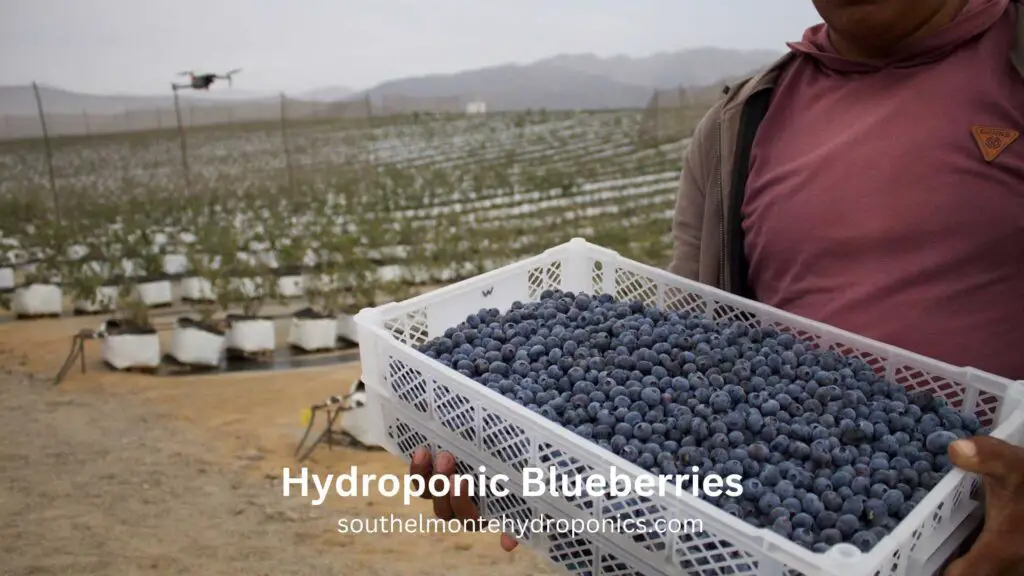
Harvesting and storing hydroponically grown blueberries is a crucial step in ensuring the quality and longevity of your yield. When it comes to harvesting, it is important to pick the blueberries at their peak of ripeness. This is usually indicated by their deep blue color and a slight softness when gently pressed. By harvesting the fruits at this stage, you can enjoy the optimal flavor and sweetness that blueberries are known for.
To harvest the blueberries, use clean and sanitized hands to gently pluck them from the plants. Be careful not to apply excessive pressure as this may damage the delicate fruits. It is advisable to harvest the blueberries in small batches to prevent them from becoming overripe while waiting to be processed or stored. If any immature or unripe blueberries are encountered during the harvest, it is best to leave them on the plant to fully mature before picking.
Once harvested, it is essential to handle the blueberries with care to avoid bruising or crushing the fruits. Place the freshly picked blueberries in shallow containers or baskets to prevent them from piling up and potentially damaging the berries at the bottom. Avoid overcrowding the containers to allow for proper air circulation and minimize the risk of moisture build-up, which could lead to spoiling. Stay tuned for the next section on storing hydroponically grown blueberries to learn how to extend their shelf life and maintain their exceptional qualities.
Growing blueberries hydroponically involves addressing specific requirements for pH, nutrient formulation, and environmental conditions. Here’s a table outlining key aspects of hydroponic blueberry cultivation:
| Aspect | Description |
|---|---|
| Blueberry Variety | Choose Suitable Varieties: Select hydroponic-friendly blueberry varieties such as highbush or half-high varieties. |
| Hydroponic System | System Type: Ideal systems include nutrient film technique (NFT), deep water culture (DWC), or substrate-based systems. |
| Growing Medium | Hydroponic Medium: Use a substrate like coconut coir, peat, or perlite for proper aeration and support for blueberry roots. |
| Nutrient Solution | Formulate Nutrient Solution: Develop a nutrient solution with a specific focus on low pH and a balanced mix of essential nutrients for blueberries. |
| pH Range | Optimal pH: Maintain an acidic pH between 4.5 and 5.5 for blueberry plants to facilitate nutrient uptake and prevent nutrient deficiencies. |
| Temperature and Humidity | Temperature Range: Blueberries prefer temperatures between 60-75°F (15-24°C). Maintain humidity levels around 50-70%. |
| Lighting Requirements | Lighting Duration: Provide 12-16 hours of light per day using high-quality grow lights, ensuring a consistent light schedule for optimal growth. |
| Plant Spacing and Support | Spacing Guidelines: Follow spacing recommendations based on the blueberry variety. Provide support for the plants, especially as they bear fruit. |
| Pruning and Training | Pruning Techniques: Implement proper pruning to manage plant size, encourage airflow, and promote fruiting on lateral branches. |
| Flowering and Pollination | Optimize Pollination: Blueberries are self-pollinating, but introducing bumblebees or gentle shaking can enhance pollination and fruit set. |
| Fruit Development and Ripening | Support Growing Fruits: Provide support for developing fruits, and monitor ripening to harvest berries at their peak flavor. |
| Watering Technique | Watering Schedule: Implement a consistent watering schedule to maintain even moisture levels in the substrate. Avoid waterlogging. |
| Nutrient Adjustments | Monitor Nutrient Levels: Regularly check nutrient levels and adjust the solution based on the growth stage and nutrient needs of blueberries. |
| Pest and Disease Management | Integrated Pest Management (IPM): Implement IPM strategies to manage pests and diseases, considering the controlled hydroponic environment. |
| Harvesting | Harvest at Maturity: Harvest blueberries when they reach full ripeness, typically indicated by a deep blue color and sweet flavor. |
| Varietal-Specific Tips | Research Variety Traits: Different blueberry varieties may have specific growth habits. Research and adapt your hydroponic system accordingly. |
| Continuous Cropping | Successive Planting: Plan for continuous cropping by starting new plants as others mature, ensuring a consistent harvest throughout the year. |
| Post-Harvest Care | Prune After Harvest: Prune selectively after harvest to encourage new growth and maintain a healthy and productive blueberry plant. |
Hydroponic blueberry cultivation requires attention to specific pH and nutrient conditions, along with proper environmental management to ensure healthy growth and a bountiful harvest.
Troubleshooting Common Issues in Hydroponic Blueberry Cultivation
When cultivating blueberries in a hydroponic system, it is important to be familiar with the common issues that may arise and how to troubleshoot them effectively. One common issue that gardeners may encounter is nutrient deficiency or imbalance. Blueberry plants require specific nutrients in the right proportions to thrive, and any deficiencies or imbalances can lead to stunted growth, yellowing leaves, or poor fruit development.
To address this issue, it is essential to regularly monitor the nutrient levels in your hydroponic system and adjust accordingly. Conducting regular water quality tests and analyzing the nutrient solution can provide valuable insights into the nutrient status of your plants. In the event of a deficiency, you can adjust the nutrient solution by adding the lacking elements or use specialized hydroponic fertilizers formulated for blueberries. Additionally, maintaining proper pH levels within the recommended range of 4.5 to 5.5 is crucial for optimal nutrient uptake by the plants. Regular monitoring and adjustments will help ensure your blueberry plants receive the necessary nutrients for healthy growth and bountiful fruit production.
What are the common issues faced in Hydroponic Blueberries cultivation?
Some common issues in hydroponic blueberry cultivation include nutrient deficiencies, pH imbalances, pest infestations, and inadequate pollination.
How can I prevent nutrient deficiencies in hydroponic blueberry cultivation?
To prevent nutrient deficiencies, it is important to regularly monitor and adjust the nutrient solution according to the specific needs of blueberry plants. Conducting regular water and nutrient solution tests can help identify any deficiencies and allow for timely adjustments.
What can cause pH imbalances in hydroponic blueberry cultivation?
pH imbalances can be caused by factors such as incorrect nutrient solution pH, excessive build-up of salts, or the presence of certain minerals in the water source. Regularly testing and adjusting the pH of the nutrient solution can help maintain optimal levels for blueberry plants.
How can I manage lighting and temperature requirements for hydroponic blueberries?
Providing the appropriate level and duration of artificial lighting, such as using high-intensity discharge lamps, can help meet the lighting requirements of blueberry plants. Additionally, maintaining the ideal temperature range of 60-70°F (15-21°C) during the day and slightly cooler temperatures at night can promote healthy growth.
Are there any pruning and training techniques specific to hydroponic blueberry plants?
Yes, pruning and training techniques such as removing excessive lateral branches and maintaining a balanced shape can help optimize light penetration and airflow within the hydroponic blueberry system. This can promote better fruit production and reduce the risk of diseases.
What are some common pests and diseases that affect hydroponic blueberries?
Common pests that can affect hydroponic blueberries include aphids, spider mites, and thrips. Diseases such as powdery mildew and root rot can also pose a threat. Implementing regular pest monitoring and using appropriate pest control measures, such as biological controls or organic pesticides, can help manage these issues.
How can I ensure adequate pollination for hydroponic blueberries?
Since hydroponic blueberries lack natural pollinators, hand pollination is often necessary. This can be done by gently shaking the flowers or using a small brush to transfer pollen between the flowers. Alternatively, introducing bumblebees or using vibrators specifically designed for pollination can also help ensure adequate pollination.
How should hydroponically grown blueberries be harvested and stored?
Hydroponically grown blueberries should be harvested when fully ripened and easily detachable from the plant. They should be stored in a cool and humid environment, preferably in temperatures around 32-36°F (0-2°C) and with a relative humidity of 90-95%, to maintain their freshness and quality.
What are some troubleshooting tips for hydroponic blueberry cultivation?
If facing issues in hydroponic blueberry cultivation, it is advisable to review the nutrient solution composition, pH levels, lighting intensity and duration, temperature, and humidity levels. Additionally, inspecting plants for signs of pests or diseases and addressing them promptly can help troubleshoot common issues.

